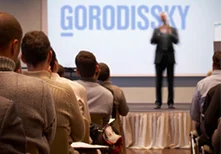Application Of The Doctrine Of Equivalents
18 June 2014In the Russian judicial practice among the most difficult cases are considered the cases of infringement of patents for inventions, especially in the pharmaceutical field, due to the specific nature of this area and the need for special knowledge to determine whether the use of the invention in the disputed product takes place.
The judge handling the case cannot be an expert in all areas. In this regard, as a rule, the courts invite experts in the field who are able to highlight questions that require special knowledge. However, as practice shows, such disputes require not only technical knowledge in a particular field, but also knowledge of intellectual property legislation and practice. One of the issues, that such an expert often faces, is an establishment of the equivalence of the features of the invention and a disputed product or process.
According to paragraph 3, Article 1358 of the Russian Civil Code, an invention is recognized to be used in the product or process, if the product contains or in the process every feature of the invention, indicated in an ndependent claim contained in the patent claims, is used or a feature equivalent to it, and, which became known as such in the art before the priority date of the invention (prior to the entry into force on the October 01, 2014 of the changes in Article 1358 of the Russian Civil Code the equivalent features were evaluated upon the date prior to the commission of acts that paragraph 2, Article 1358 of the Russian Civil Code referred to actions that infringe the exclusive rights of the patent holder).
Meanwhile, the Russian legislation does not disclose the concept content of an «equivalent feature."
Some clarification of the concept of the doctrine of equivalence was given in the Instructions for the state scientific and technical examination of inventions (
There are also guidelines and procedures materials «Procedure for the preparation, completion and approval of documents executed in the payment of remuneration to inventors for the use of inventions and innovations, and the payment of incentive remuneration for promoting invention and rationalization," issued by the USSR State Committee for Inventions and Discoveries in 1979. In paragraph 4.13, «Summary of equivalence of the used in the object technical solutions to the items of a claim," the document states: «4.13.2. Replacing of the features stated in the claims with other technical solutions, elements are recognized being equivalent only when the following conditions are met:
a) replacement of the features with the equivalents does not alter the substance of an invention;
b) replacement of the inventive features with other elements (equivalents) achieves the same result;
c) means of implementation are replaced with quid pro quo (equivalents);
d) technical solutions (elements), which inventive features are replaced with, are known in the art."
Thus, the analysis of equivalence of the features should primarily determine a function of the feature used to characterize the patented invention, and a function of a feature used in the product, and also should be revealed the fulfillment of the conditions stated above. Moreover, differences in the implementation of these features, and as a result, a difference in some properties, may not be the only reason for the conclusion of the absence of the equivalence of the features.
Experienced experts are well familiar with these approaches and in practice use the doctrine of equivalents in those cases when it really needs to be applied. At the same time, an incorrect application of the doctrine of equivalents can lead to errors in determining a fact of use of an invention and, therefore, lead to a substantively wrong judicial act.
As an example, the case number
Throughout the legal proceedings, the forensic examination was appointed to answer the question: whether it is used in the pharmaceutical composition «AnGricaps Maxima» produced by the UE «Minskintercaps» (Belarus), each feature of the invention, shown in an independent claim contained in the claims of the Eurasian patent No. 8765 «Antiinfluenzal agent," or any equivalent feature?
The expertise was charged to the experts of the Chamber of Commerce and Industry of the Nizhny Novgorod region, who prepared the report and pointed out that in the medicine in question, the patented invention is not used. Therewith, the experts concluded that the all the features of the independent claim of the patent used in the «AnGricaps Maxima» medicine, except for one: as part of the pharmaceutical under the patent, the substance «calcium gluconate» is used, and in the medicine produced by the UE «Minskintercaps» — «calcium carbonate." According to experts of the CCI, these features are not equivalent.
Having analyzed the conclusions of the experts the specialists of Gorodissky & Partners drew the court’s attention to the fact that the experts wrongly applied the doctrine of equivalents.
First, during the interview, the experts were unable to explain as of what date exactly they were evaluated the previous disclosure of the equivalence of the features.
Second, the experts did not conduct a correct analysis of the functions of the products, which they perform in the specified preparations.
Third, basing their conclusion on the absence of equivalence of the above characteristics, the experts without evidence indicated that the presence in the «AnGricaps Maxima» medicine of calcium carbonate helps eliminate epigastric burning, which gives the product a useful additional quality.
Meanwhile, according to the instructions for use of the «AnGricaps Maxima» medicine, the amount of calcium carbonate in the formulation is 11.2 mg. In the known preparations for treating epigastric burning, the amount of calcium carbonate is in hundreds times more than a given amount, in particular:
- Additive calcium — 1250 mg.
- Upsavit calcium — 1250 mg.
- Vitacalcin — 693.68 mg.
The
Namely, according to the instructions to the «AnGricaps Maxima» medicine «calcium prevents the development of increased vascular permeability and fragility, has the membrane stabilizing effect."
The description of the invention by Eurasian patent No. 8765 indicates that calcium gluconate is used in the patented formulation to prevent the development of increased permeability and fragility of blood vessels, causing the hemorrhagic processes in influenza and A.R.
In this connection, it is obvious that the introduction to the «AnGricaps Maxima» medicine of calcium carbonate is aimed at achieving an effect similar to that achieved by using calcium gluconate in the patented invention, which substantively reduces itself to ensure a certain amount of calcium in the formulation. Replacement of the calcium gluconate by the calcium carbonate does not change the nature of the patented invention, and does not affect the result achieved in the implementation of the invention.
Furthermore, the above conclusion is confirmed by the fact that the calcium content per one dose of the preparation with calcium gluconate according to the Eurasian patent No. 8765 is between 8.38 mg and 10.24 mg, and per one dose with calcium carbonate in accordance with Instruction to the «AnGricaps Maxima» medicine — 8.96 mg, i.e., it is in the same range as in the invention by a Eurasian patent No.8765, on which the attention of the court was brought to.
Consequently, in this case there is the substitutability of the two salts (gluconate/carbonate) of calcium in the compared medical preparations, since both salts perform in the patented invention, and in the «AnGricaps Maxima» medicine the same function, despite their differences in the structure and in a number of physical and chemical properties, and therefore, such features are equivalent.
In view of the above arguments, the court recognized the expert opinion as inadmissible evidence in the case and ordered a new examination, entrusting it to another expert.
As a result of
Although the above approach to the application of the doctrine of equivalents is generally accepted, but the practice shows that in some cases it is necessary to take into account the additionally
The specified approach, until recently, was not peculiar to the Russian judicial practice, however, when considering the claim of the CJSC «NPK «Kombiotech» to the company Serum Institute of India Ltd. (India) on the protection of the exclusive rights to the invention under patent No. 2238105 «Recombinant vaccines for the prevention of hepatitis B» (Resolution of the Presidium of the Supreme arbitrazh court of the Russian Federation No 11025/11 of the
The essence of the argument was as follows. Russian patent No. 2238105 (with priority date of
The consideration of the dispute reached the Supreme Arbitrazh Court of the Russian Federation, who noted that the Claimant, referring to the Russian PTO with applications for patents for a recombinant vaccine for the prevention of hepatitis B, as well as the yeast strains used in the production of the vaccine, pointed out that in the present invention uses new, previously unknown and not used by other manufacturers of vaccines for the prevention of hepatitis B virus strains of yeast, which determines the novelty and inventive level of the invention. The presence of novelty, that is, the unknown product (vaccines) of the information contained in the prior art, confirmed the decisions of the Chamber for Patent Disputes of
In such circumstances, the Supreme Arbitrazh Court of the Russian Federation did not agree with the conclusions of the courts of appeal and of the cassation instances that in the production of vaccines, which the respondent initiated a few years before the priority date of the invention under patent No. 2238105, it is used the invention of the claimant; the court overturned the acts of those instances and left confirmed the decision of the trial court, which stated that the produced by the respondent vaccine is obtained by culturing genetically modified yeast cells (that are embedded in a surface antigen gene of hepatitis B) of another, different from the specified in the patent of the claimant, strain. Thus, the Court recognized that the respondent does not use in the production of the vaccines one of the features of the claims of invention of the claimant.
The above examples demonstrate that the correct resolution of a case depends upon the level of skills and knowledge of the expert. However, it is encouraging to observe a positive trend in the Russian judicial practice and the willingness of courts critically to analyze the conclusions of experts, and to accept for service the judiciary approaches from other jurisdictions, which certainly helps to improve the quality of the Russian justice system as a whole.
To access this website, we request that you read and accept the Terms of Use.









